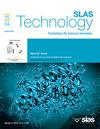低代码,高影响:低代码平台的应用,使实验室数字化和自动化应用的发展民主化。
IF 3.7
4区 医学
Q3 BIOCHEMICAL RESEARCH METHODS
引用次数: 0
摘要
通常,在实验室自动化和生命科学软件应用中,新原型和概念的初始化需要硬件和软件专家之间的密切合作,以及生物学家、化学家、生物技术专家或过程工程师等实验室人员。这种设置——今天仍然很常见——通常意味着实验室人员的想法和要求必须由软件开发人员转化为软件应用程序,这经常导致较长的开发时间。低代码开发平台(LCDPs)通过提供一种方法来减少对传统软件开发方法的依赖,从而加速应用程序开发,使实验室人员无需编写大量代码即可构建应用程序,从而寻求解决这一挑战。通过提供可视化的拖放界面,实验室人员可以积极地参与软件开发过程。这有助于实现应用程序创建的民主化,并可以快速设置适合实验室需求的软件解决方案。本研究演示了在生物处理实验室环境中使用开源LCDP和商用上游和下游设备的四种不同用例的实现。通过不同的通信协议,LCDP促进了不同设备类型的集成和控制,还实现了仪表板、监控和数据处理功能。该方法强调了LCDPs用于快速原型设计和评估实验室和生物过程自动化管道的适用性,潜在地加快了生物技术生产过程和产品的开发。所有开发的组件都可以通过一个公开访问的存储库获得,从而促进科学界的重用和进一步开发。本文章由计算机程序翻译,如有差异,请以英文原文为准。
Low code, high impact: Application of low-code platforms to enable and democratize the development of laboratory digitalization and automation applications
Conventionally, the initialization of new prototypes and concepts in laboratory automation and life science software applications has required close collaboration between hardware and software experts, as well as lab personnel such as biologists, chemists, biotechnologists, or process engineers. This setup - still common today - often means that the ideas and requests of lab personnel must be translated into software applications by software developers, which frequently results in long development times. Low-Code Development Platforms (LCDPs) seek to address this challenge by providing a way to accelerate application development by reducing dependence on traditional software development methods, empowering lab personnel to build applications without writing extensive amount of code. By offering a visual, drag-and-drop interface, lab personnel can actively participate in the software development process. This helps democratize application creation and can lead to the quick setup of software solutions tailored to laboratory needs.
This study demonstrates the implementation of four different use cases in a bioprocessing laboratory environment using an open-source LCDP and commercially available upstream and downstream equipment. The LCDP facilitated the integration and control of different device types with varying communication protocols also enabling dashboarding, monitoring and data processing capabilities. This methodology highlights the suitability of LCDPs for rapidly prototyping and evaluating laboratory and bioprocess automation pipelines, potentially expediting the development of biotechnological production processes and products. All developed components are made available through a publicly accessible repository, facilitating reuse and further development by the scientific community.
求助全文
通过发布文献求助,成功后即可免费获取论文全文。
去求助
来源期刊

SLAS Technology
Computer Science-Computer Science Applications
CiteScore
6.30
自引率
7.40%
发文量
47
审稿时长
106 days
期刊介绍:
SLAS Technology emphasizes scientific and technical advances that enable and improve life sciences research and development; drug-delivery; diagnostics; biomedical and molecular imaging; and personalized and precision medicine. This includes high-throughput and other laboratory automation technologies; micro/nanotechnologies; analytical, separation and quantitative techniques; synthetic chemistry and biology; informatics (data analysis, statistics, bio, genomic and chemoinformatics); and more.
 求助内容:
求助内容: 应助结果提醒方式:
应助结果提醒方式:


